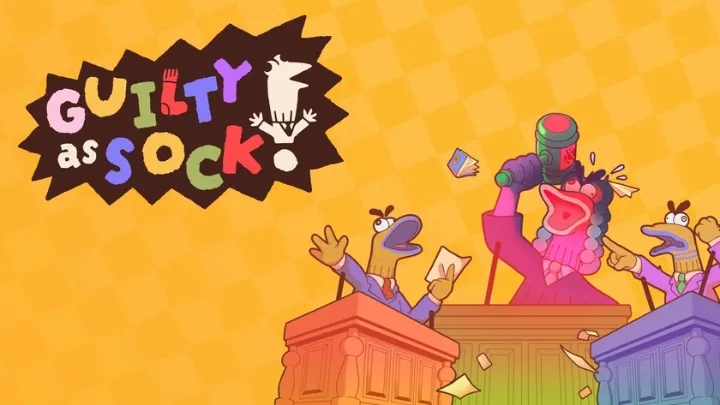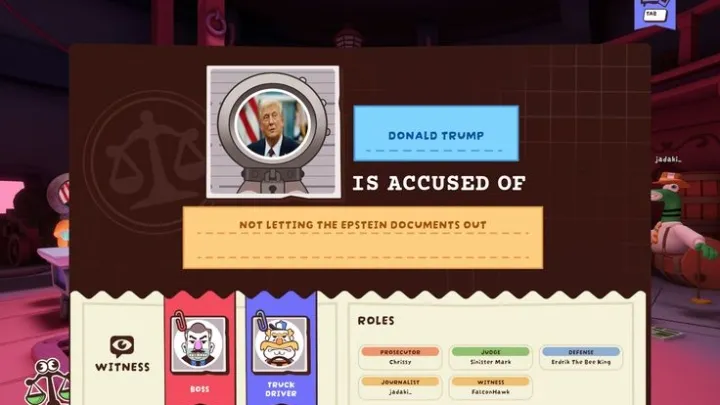Guilty as Sock! is a party game for three to nine players, developed and published by the independent studio Demon Max. It’s a game that tosses legal decorum out the window in favor of pure, improvisational chaos. Players assume the roles of sock puppets in a wildly absurd courtroom, where the case is always bizarre, the evidence is always nonsensical, and the final verdict is always in doubt. It’s a game where wit, quick thinking, and the ability to shout over your friends are the keys to victory. This guide will walk you through the essential components of the game, from the different roles and their unique powers to the best strategies for winning your case, no matter how ridiculous the charge.
The game thrives on player interaction and is built around voice chat. There are no scripted lines or rigid rules to follow; instead, players are given a loose framework and the freedom to create their own narrative. This dynamic, player-driven experience is what makes every trial unique and memorable. From the moment the prosecutor presents their outlandish accusation to the final, gavel-slamming verdict, Guilty as Sock! is a hilarious and unpredictable journey into legal absurdity.

How to Understand the Core Roles and Their Functions
The success of a trial in Guilty as Sock! hinges on the interactions between the main roles. Each player has a distinct purpose and a set of abilities to influence the outcome.
- The Judge: The ultimate authority in the courtroom. The judge controls who speaks, can silence unruly lawyers with a gavel slam, and ultimately delivers the verdict. A good judge must be able to manage the chaos while also enjoying the absurdity of the arguments. They are the one person who can bring a shred of order to the pandemonium.
- The Prosecutor: The accuser. This player privately creates the crime and the defendant, then presents the case to the court. Their goal is to prove the defendant is "Guilty." They are given a hand of random "evidence" cards to support their wild accusations.
- The Defense Attorney: The defender. This player's job is to prove their client is "Not Guilty." Like the prosecutor, they also receive a hand of random evidence cards, which they must creatively use to counter the prosecution's case.
How to Master the Secondary Roles for Added Mayhem
While the main roles are the foundation of the game, the optional secondary roles add layers of complexity and chaos to the trial.
- The Witness: A witness is called to the stand to provide "key facts" that can either help or hurt the case. This is a role for a player who excels at improvisation and can think on their feet, as they must invent a backstory and provide testimony that fits the narrative being created.
- The Bailiff: The enforcer of order. A bailiff has the power to subdue unruly players and silence them with their unique abilities. They are a valuable asset for the judge who wants to maintain a semblance of control.
- The Journalist: The purveyor of fake news. A journalist can publish "breaking news articles" during the trial, which can then be used by the lawyers as evidence. A clever journalist can dramatically sway the trial with a single headline.
- The Juror: The final vote. Jurors vote "guilty" or "not guilty" at the end of the trial. They also have the ability to draw doodles, adding a fun, visual element to the proceedings.
 How to Use Evidence Cards and Craft a Winning Narrative
How to Use Evidence Cards and Craft a Winning Narrative
The evidence cards are the lifeblood of the lawyers' arguments. Each card is a random, often absurd item that must be integrated into the case.
- Storytelling is Key: The most effective strategy is to weave your evidence cards into a cohesive, albeit completely fictional, narrative. Don't just present the card; explain its significance to the crime. For example, a "bloody spork" isn't just a spork; it's a "murder weapon found at the scene, covered in strawberry jam and a single, unidentifiable hair."
- Custom Decks: The game allows you to create custom decks of evidence cards. This is a great way to tailor your cards to a specific theme or to add inside jokes to your game with friends.
- Bluffing and Misdirection: Your opponent will be trying to poke holes in your story. Use your cards to create a narrative so convoluted and ridiculous that it's impossible to disprove. Throwing out "wildcard" evidence at a crucial moment can completely derail the other side's argument.
How to Use Your Physical Actions and Abilities
Beyond the verbal arguments, players have physical actions they can perform to disrupt the game and their opponents.
- Paper Balls: Every player has a limited number of paper balls they can throw at others. A well-aimed paper ball can temporarily stun another player, interrupting their speech or their ability to present evidence.
- Gavel Slamming: As the judge, a powerful gavel slam can be used to silence players and bring a chaotic courtroom to order.
- Emotes and Gestures: Your sock puppet can perform a variety of emotes, from pointing to taunting. These simple gestures can add a layer of comedy and personality to your arguments.
 How to Formulate a Winning Strategy
How to Formulate a Winning Strategy
Winning in Guilty as Sock! is less about legal logic and more about effective communication and strategy.
- Be Confident: No matter how silly your argument is, present it with complete confidence. A confident tone can be more persuasive than any evidence card.
- Listen to Your Opponent: Pay close attention to what the other side is saying. Jot down their key points on your notepad and look for contradictions in their story.
- Know Your Role: Each role requires a different approach. As a prosecutor, be bold and outrageous. As a defense attorney, be quick to object and find loopholes. As a judge, be firm but fair.
- Embrace the Chaos: The game is at its best when it's chaotic. Don't be afraid to talk over each other, to make wild accusations, and to embrace the absurdity. The funniest moments often come from the most unhinged arguments.
Conclusion
Guilty as Sock! is a testament to the power of player-driven storytelling and the joy of social gaming. It’s a game where the only rule is to have fun, and the only limit is your imagination. By understanding its roles, mastering its mechanics, and embracing the chaos, you can become the most persuasive and hilarious sock puppet in the courtroom.

















